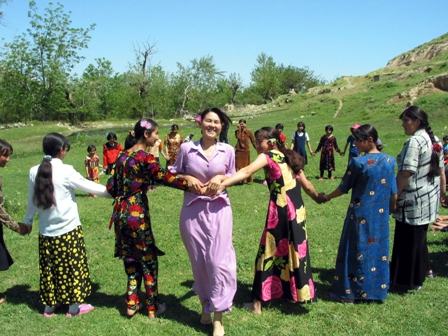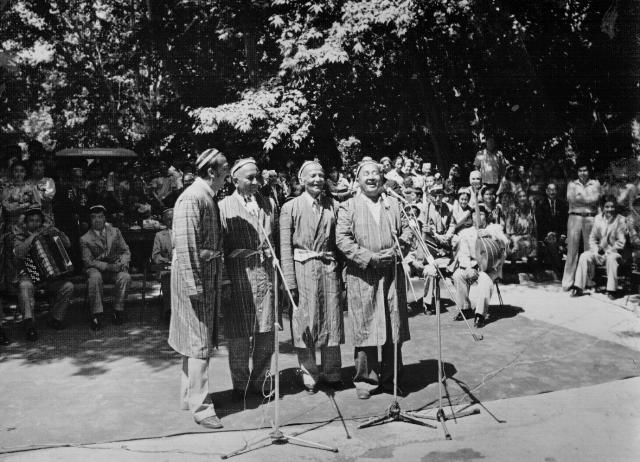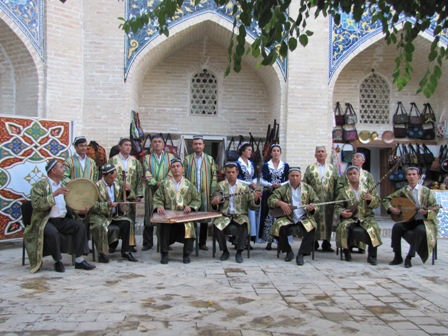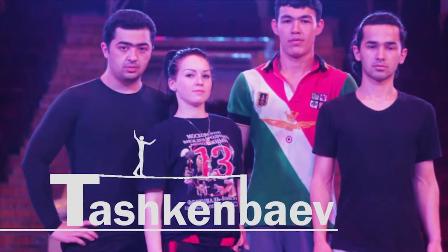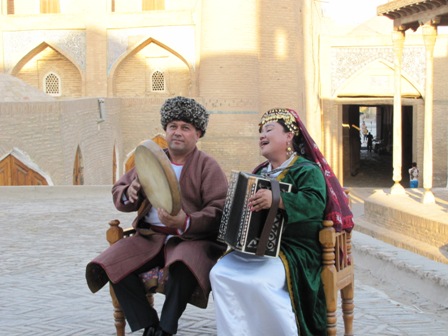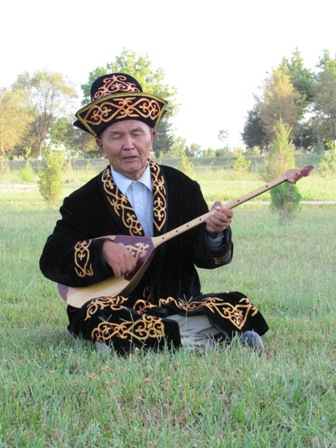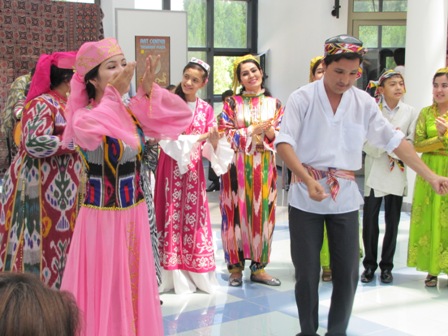Dances of the Ferghana Valley
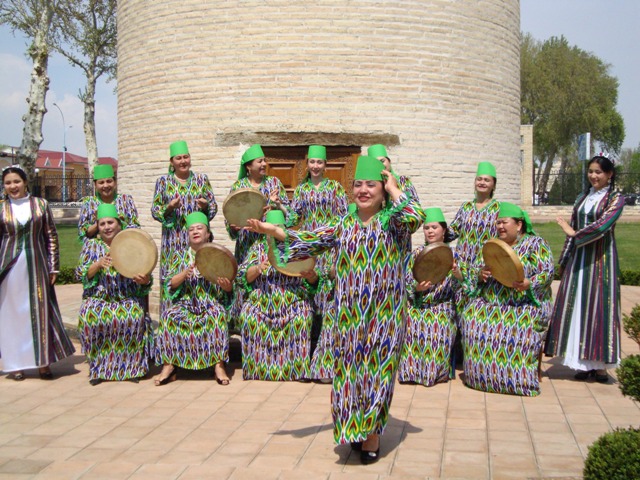
Domain: Performing Arts
Index Number: 02.05.04
Ferghana dance got formed and developed in the Ferghana Valley. Its basic features are the following: free stance, light and expressive steps, multifaceted, well-polished and expressive movements of arms, hands, and fingers, peculiar way of looking, sighing and nodding, etc. In men's dances dominate bold movements, while in women's dances emphasis is made on gracefulness and splendor.
The roots of Ferghana dance need to be looked for in "Katta oyin" ("Big dance"), which evolved and was specifically designated for squares, and "Kichik oyin" ("Small dance"), which was performed in reception halls and courtyards. "Katta oyin" comprised of 280 styles, which reflect a certain storyline with the help of dance. From among the styles, which came down to us, there are the ones, which form certain dancing movements such as rez, titratma, shokh, gul oyin, yorgha, sarbozi, charkh, khaqqoni, orom, jilvoni, sakhta, duchava, rogh, kata samo, yallama, qaytarma, dupoya (oqsatma), olma-anor.
"Kichik oyin" consisted of lyrical, passionate and heartfelt dances, performed by folk dancers and professionals during singing of yalla and lapar songs under accompaniment of doira, dutar and other musical instruments. The dances performed by yallachi (in particular, "Duchava", "Yallama", "Qora soch", "Qaytarma" or "Tanovar" cycle of dances) and the dances which emerged under the influence of Uighur dance called "Andijon samosi" ("Andijan polka") and which were performed by young men, were especially popular in Ferghana.
Men wear camisole made from coarse calico and silk, light robes, wide trousers, waist belts, beautiful skullcaps and colorful boots. Women wear dresses made of khonatlas and beqasam fabrics (types of local fabric), or more often – dresses made of Chinese silk of white color with a collar; elegant sleeveless jackets, brocade waistcoats, silk trousers, kerchiefs, headscarfs (parang, durra), shoes on small hills, and various adornments and accessories.
One of the most popular dances of Ferghana is "Tanovar". It was performed for the first time onstage by Mukarram Turghunbaeva. It is the dance, which brightly demonstrates languor and great desire of a girl to meet with her beloved one. Notably, the movement of head, hands, and legs (qoldasta) as well as of the whole body is very smooth and graceful in this type of dance.
At the beginning of the ХХ century there were many popular dancers (either men or women), from among whom it is possible to mention Makkaylik (Usta Muhammadjon), Khamdamkhon, Solih Khoji Baratov, Otakhoja Saidazimov, Yusufjon-qiziq, Adolatkhon, Sharofat-satang.
Great are the merits of Yusufjon qiziq Shakarjonov and Usta Olim Komilov in revival and development of onstage (scenic) form of Ferghana dance in the XX century, in its enrichment with new elements. It is they, who began staging solo and group dance performances designed for men and women. Notably, such individuals like Tamara-khonim, Mukarram Turghunbaeva, Roziya Karimova, Gavhar Rakhimova, Kunduz Mirkarimova, Dilafruz Jabborova, Qizlarkhon Dostmuhammedova, Mamura Ergasheva and others, by applying experience accumulated by their teachers, further continued the traditions associated with Ferghana dance.
At present Ferghana dance is being developed and promoted by professional and amateur dance ensembles, ensembles of song and dance. Every two years a republican competition of dancers (which is named after Mukarram Turghunboeva) is organized, which helps to discover young talented performers of Ferghana dance, and other types of dance in Uzbekistan.





